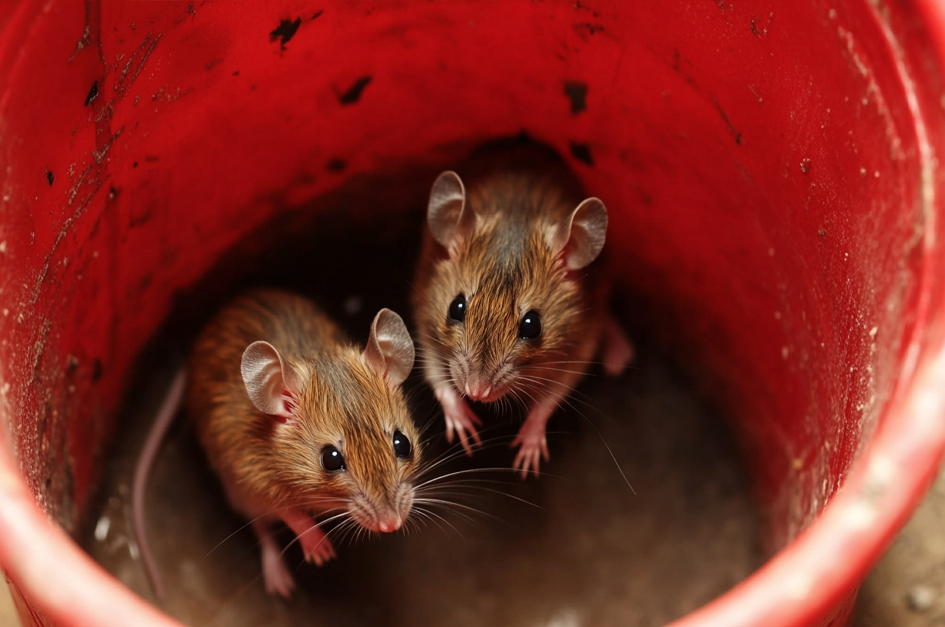What's New At Evans Pest Control
Learn more about Evans Pest Control capabilities
Humane DIY Rodent Traps: Effective Methods To Catch Mice and Rats At Home
Rodent infestations are a common problem for many homeowners. Mice and rats are not only a nuisance, but they carry diseases and cause damage to your property by gnawing through wires, walls, and insulation. If you're dealing with an unwanted rodent presence in your home, setting up these humane traps can be an effective solution. Let’s explore some low cost and humane DIY rodent trap options you can try.
Why Use DIY Rodent Traps?
DIY rodent traps are a cost-effective and customizable way to manage a rodent problem. They allow you to directly address the issue without the need for harsh chemicals or poisons that can be harmful to pets and children. By choosing the right traps and placement, you can quickly reduce the rodent population in and around your home.
Types Of DIY Rodent Traps
There are several types of rodent traps you can make or set up at home, each with its own advantages depending on the severity of the infestation and your personal preferences.
1. The Old Bucket Trick
The Bucket trap is a simple, yet highly effective DIY solution for catching multiple rodents at once. These traps are non-lethal and can be reset as needed.
• How to Use: Take a large bucket and place a ramp leading up to the rim (a piece of wood or cardboard works). On the rim, attach a baited platform, such as a rotating soda can suspended over the bucket by a wire. When the rodent steps onto the can to reach the bait, the can rotates, causing the rodent to fall into the bucket. You can fill the bucket with water if you want the trap to be lethal or leave it empty for a humane catch-and-release method.
• DIY Tip: The materials for a bucket trap are easy to find around the house. Just ensure the bucket is tall enough to prevent the rodents from escaping once they fall in.
2. The Bottle Trap
The bottle trap is a creative, humane DIY solution for catching mice alive. It’s easy to make and allows for the safe release of the captured rodent.
• How to Use: Take an empty plastic bottle and cut off the neck at an angle, creating a funnel. Position the bottle so that the wide opening faces upward, and bait it with peanut butter or other rodent-attracting foods. When the rodent climbs into the bottle to reach the bait, the angled neck prevents it from escaping.
• DIY Tip: Secure the bottle to a piece of wood or heavy material to prevent the rodent from knocking it over and escaping.
3. The Inventive Cardboard Tube Trap
A cardboard tube trap is a simple, humane way to catch small rodents like mice. All you need is a toilet paper roll, bait, and a counter or shelf where the rodent can fall into a container.
• How to Use: Place bait (such as peanut butter) inside the cardboard tube and balance the tube halfway over the edge of a counter or table. Below the tube, place a tall container like a bucket or wastebasket. The rodent will enter the tube to reach the bait, and the weight will cause the tube to fall into the container, trapping the rodent inside.
• DIY Tip: This trap is best suited for catching mice rather than larger rodents like rats, which may not fit inside the tube.
Tips For Effective DIY Rodent Trapping
To maximize the effectiveness of your DIY rodent traps, follow these essential tips:
• Bait Selection: Rodents are opportunistic eaters and are attracted to high-protein and high-fat foods. Peanut butter, nuts, cheese, and chocolate are common bait options, but you can also use small pieces of meat or pet food for rats.
• Trap Placement: Rodents tend to travel along walls and avoid open spaces. Position your traps in areas where you’ve seen droppings, gnaw marks, or other signs of rodent activity. Traps should be placed perpendicular to walls with the baited end facing the wall.
• Handle Traps with Gloves: Rodents can smell human scent on traps and may avoid them. Wear gloves when setting and checking traps to minimize your scent.
• Monitor and Adjust: Check your traps daily and remove any captured rodents promptly. If traps aren’t yielding results, try moving them to different locations or changing the bait.
When To Call In The Professionals At Evans Pest Control
DIY rodent traps can be effective for small infestations, but if you’re dealing with a larger population of mice or rats, it might be time to call in the professionals at Evans Pest Control. At Evans Pest Control, we specialize in pet safe, effective rodent control solutions tailored to your needs. We can help assess the extent of the infestation and implement a comprehensive treatment plan to keep your home rodent-free.
Don't let rodents take over your property. If these DIY traps aren’t solving the problem, contact Evans Pest Control today for our expert pest management services.
Get a Free Phone Consultation
Having a bug problem? Talk to a professional right now!
Yes, We Can Help
Drop us a message and we will help you today!

